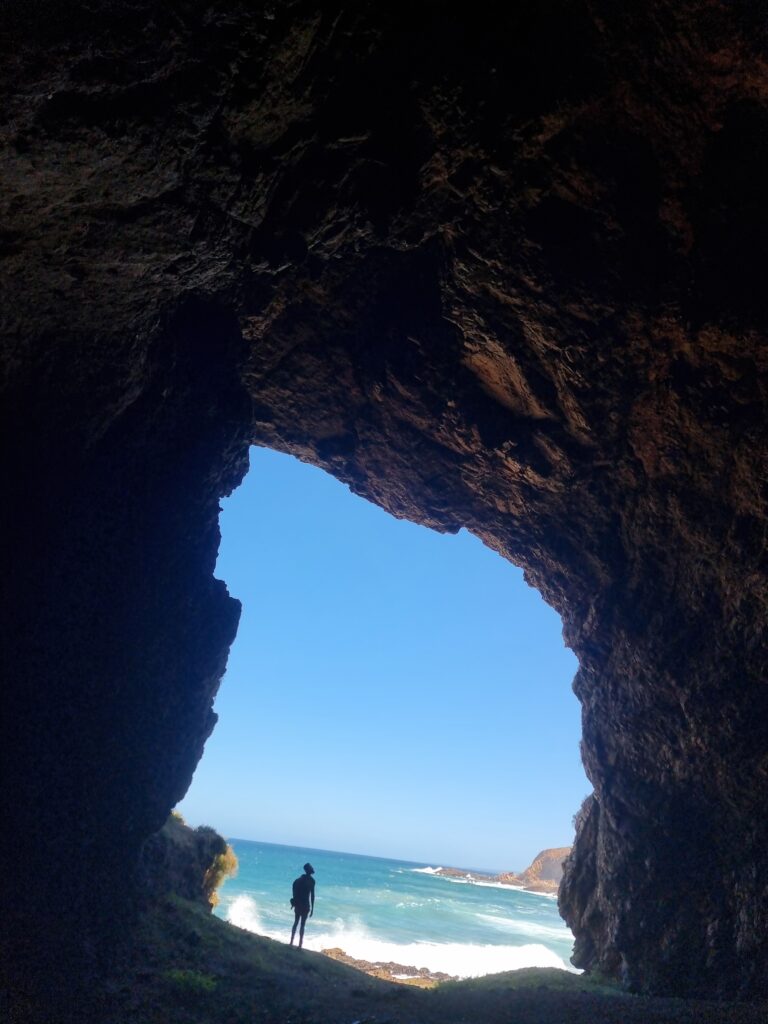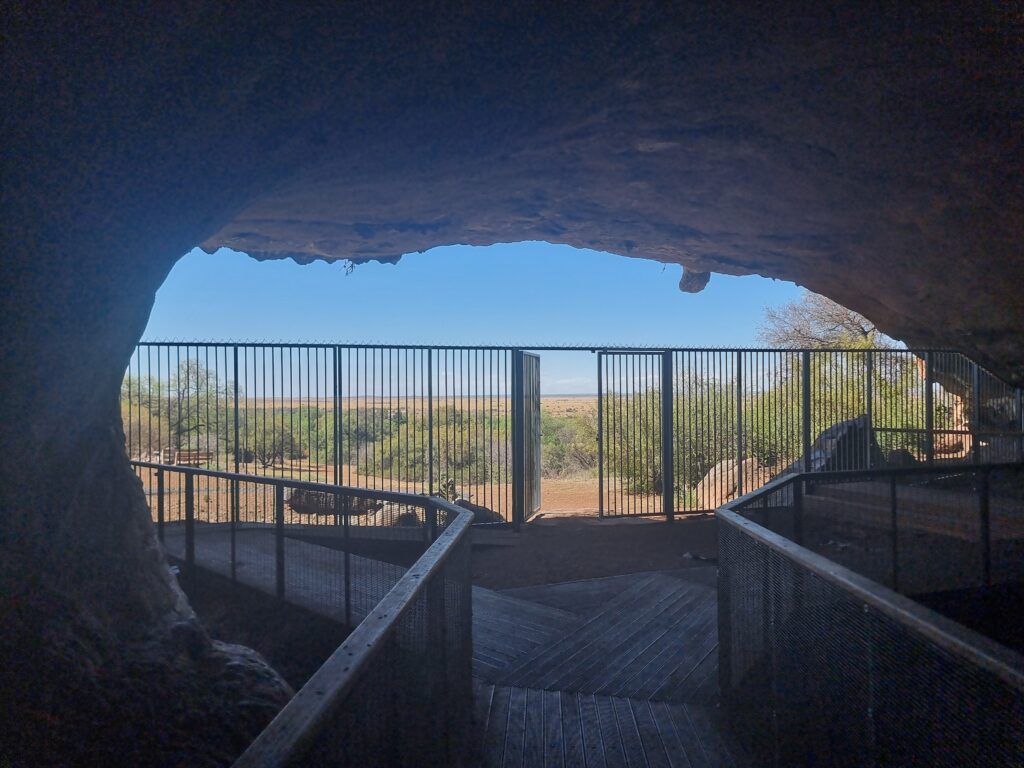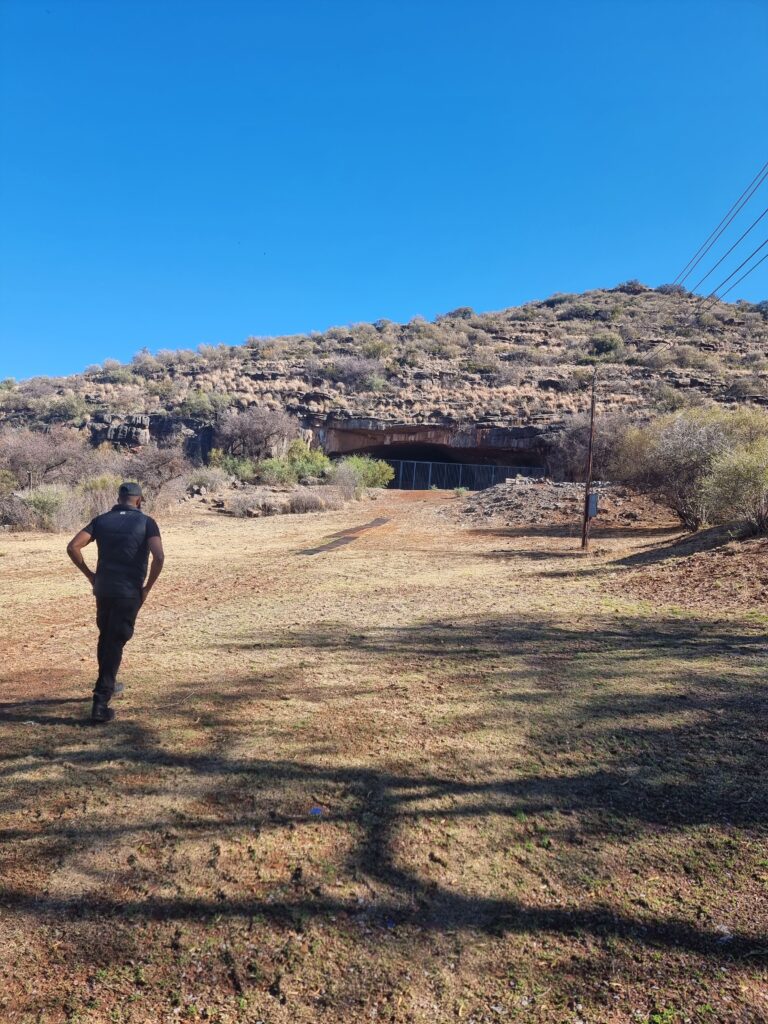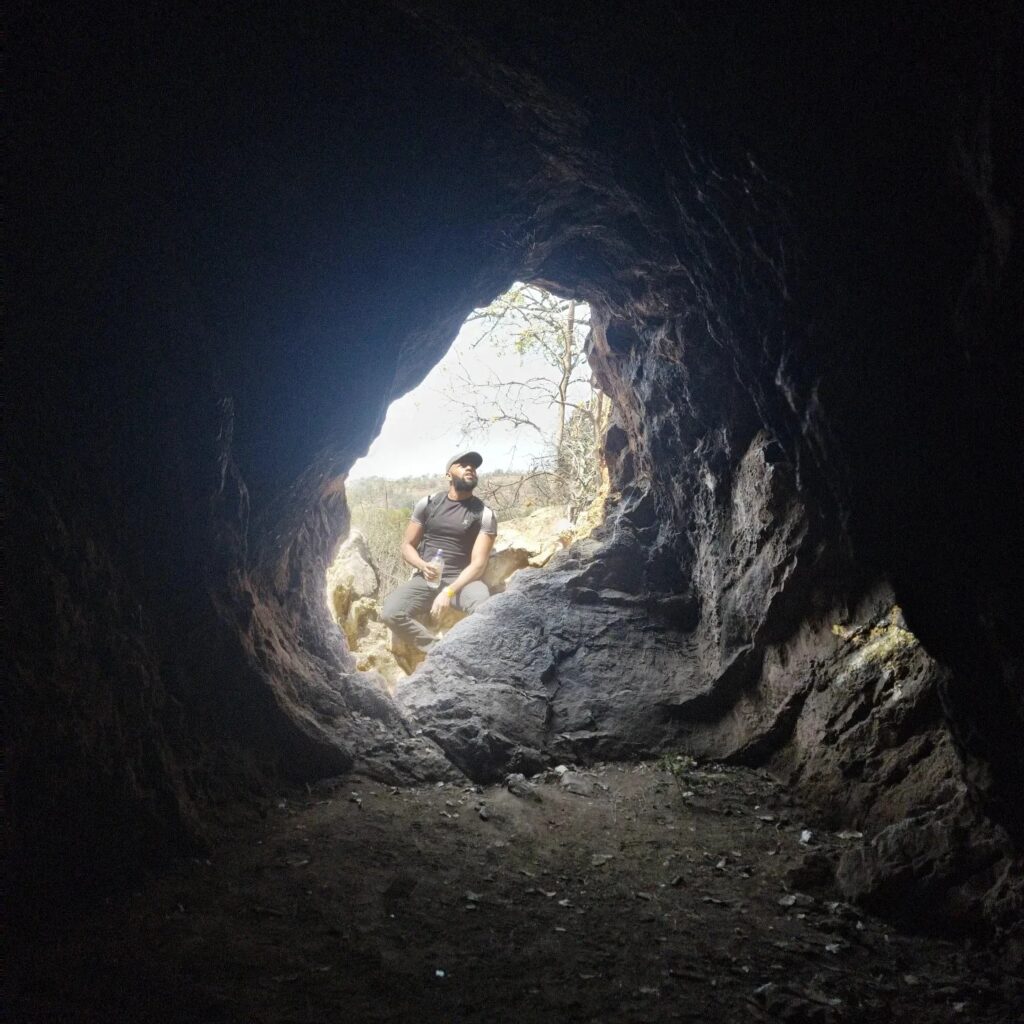
Exploring the Depths – My Journey Through South Africa’s Caves
Over the last two years, my fascination with caves has taken me on an incredible journey across South Africa. It all started with a visit to the Sudwala Caves, which sparked a deep curiosity about these natural wonders and the history they hold. Since then, I’ve made it a mission to explore as many caves as possible, uncovering the rich cultural and scientific heritage embedded within them. Here’s a glimpse into my experiences with some of South Africa’s most captivating caves.
1. Sudwala Caves (Mpumalanga)
My cave exploration journey began with the Sudwala Caves, a place that left a lasting impression on me. These caves, estimated to be around 240 million years old, are among the oldest in the world. The sheer size of the caves, the history of Somcuba and King Mswati, and the eerie feeling of standing in such an ancient place all combined to spark a deep curiosity. The caves were once used as a refuge during tribal conflicts, including the attempt to smoke out Somcuba and his followers with fire at the entrance. Standing in this vast underground world, which felt like a natural cathedral, I began to wonder what other secrets lay beneath the surface of South Africa.
2. Echo Caves (Limpopo)
Located on the edge of the Panorama Route, the Echo Caves were a natural next step in my caving journey. These caves are even larger than Sudwala and hold their own fascinating history. Nestled literally under a mountain, the Echo Caves were a significant asset to the Bapedi kingdom during the reign of King Sekhukhune or one of his predecessors. The caves provided refuge and a strategic advantage, with their intricate network of chambers offering protection during times of conflict.
One of the most memorable aspects of the Echo Caves is the unique chambers, such as the Madonna Cave, where the rock formations almost resemble soft textures, creating a surprisingly comfortable environment. The sleeping quarters within the cave, with their ambient lighting, felt remarkably like a natural bedroom. I couldn’t help but imagine what it must have been like for the clans who inhabited these caves long ago, using only fire to light their way. The ash marks on the ceiling in areas used as kitchens tell a silent story of daily life in the cave. The caves’ acoustics are what gave them their name—echoes reverberate through the chambers, creating an almost ethereal atmosphere.
3. Cave of Man (Mpumalanga)
The Cave of Man, or more accurately, the Museum of Man, in Mpumalanga, is an outdoor museum that offers a unique glimpse into the history of early humans. Surrounded by large tracts of farmland, primarily citrus farms, the cave is a striking feature—a cut-out on the side of a hill that resembles a stage at a concert. The site, which was once a Bushman shelter, showcases the evolution of mankind and the different cultural tribes that have passed through this region over millennia.
The museum is filled with artifacts and exhibits, including an ox wagon from the Voortrekkers, that tell the story of human survival and adaptation. The rock formation itself, more of a natural shelter than a traditional cave, was formed over thousands of years by natural forces. The surrounding valley of citrus farms adds a layer of contrast, highlighting how the land has been used and adapted by humans over time.
As I walked through the museum, I was struck by the continuity of human experience. The same basic needs—shelter, food, and community—have driven human behavior for tens of thousands of years. While the specifics of our lives have changed dramatically, the underlying impulses remain the same. Standing in this ancient shelter, I felt a deep connection to those who came before, their struggles, and their triumphs.
4. Pinnacle Point Cave (Mossel Bay)
Pinnacle Point was a revelation. This UNESCO World Heritage site is perched on the cliffs of Mossel Bay, offering stunning views of the ocean. But the real treasure lies within the cave itself. It’s believed that early humans lived here over 160,000 years ago, hunting and gathering food along the coastline. Evidence of hunting activities and the remains of food sources suggest that the inhabitants were cautious, possibly to avoid attracting predators.
Pinnacle Point is also where I first learned about Flowstone, stalactites, and stalagmites. The cave is filled with these stunning formations, each telling a story of thousands of years of natural history. The rich flora and fauna that cover the Cape, especially the Fynbos, add another layer of fascination. South Africa is home to an extraordinary variety of Fynbos species, each adapted to the region’s unique climate. The fragrant aromas of Fynbos filled the air, creating a sensory experience that complemented the historical significance of the cave.
The findings at Pinnacle Point also provide crucial insights into early human behavior and migration patterns. The artifacts and remains found here show that these early humans were not only surviving but thriving, developing complex social structures and technologies. As I stood there, I couldn’t help but reflect on how little has changed in the grand scheme of things. We are still driven by the same basic needs—community, survival, and the desire to create and innovate.
5. Wonderwerk Cave (Kuruman, Northern Cape)

Wonderwerk Cave in the Northern Cape was a complete shocker for me. This cave is home to some of the earliest evidence of human use of fire, with archaeological findings dating back over a million years. The idea that early humans, or near-humans, discovered fire here in South Africa is both humbling and awe-inspiring. Fire is one of humanity’s greatest discoveries, a tool that has shaped our evolution and propelled us forward. To think that this monumental discovery might have happened right here, in South Africa, adds a poetic depth to the story of human innovation.

The Wonderwerk Cave is steeped in legends as well. The Bosman family is said to have lived in the cave, and there’s even a myth about a giant man who once roamed these parts. The Voortrekkers, during their great trek, are said to have driven an entire ox wagon into the cave, where it was so large they could turn it around with the oxen still mounted. The cave’s vastness and history left me in awe, feeling connected to the very origins of human civilization.
6. Sterkfontein Cave (Gauteng)
The Sterkfontein Caves are one of the most famous sites in South Africa, known as part of the Cradle of Humankind. This site has yielded some of the most important fossils in human history, including remains of the Australopithecus species, providing crucial insights into the early stages of human evolution. Unfortunately, my visits here were met with closed gates due to flooding, so I wasn’t able to explore the caves themselves. However, the significance of Sterkfontein cannot be overstated. It’s a place that has given us a window into our ancient past.
7. Maropeng Cave (Museum)
While I wasn’t able to explore Sterkfontein, I did have the opportunity to visit the Maropeng Cave and Museum. This site is a gateway to understanding the Cradle of Humankind, with exhibits that take you through the journey of human evolution. The museum is a treasure trove of information, with displays that are both educational and thought-provoking. One of the exhibits that stood out to me was the timeline of human development, which places the discoveries at Sterkfontein and other nearby sites in context with the broader story of human evolution. It’s a place that makes you reflect on the incredible journey of our species and our deep connection to the earth.
8. Cango Caves (Oudtshoorn)
The Cango Caves are, without a doubt, the largest caves I’ve ever seen. Located in the Western Cape, these caves are a marvel of natural engineering. Only two stages of the cave are open to the public, but even these limited sections are vast. The sheer scale of the chambers is breathtaking, with stalactites and stalagmites forming intricate patterns that seem almost too perfect to be natural. It’s a place that leaves you in awe of the earth’s natural processes and the beauty that can be found underground.
Before our exploration, we were presented with a documentary about the explorers who ventured deeper into the cave, documenting the different rock formations and crystals found in the less accessible sections. The documentary added a layer of understanding and appreciation for the sheer determination and curiosity that drove these explorers to go where few had gone before. The explorers discovered various unique formations, including “frozen waterfalls” of calcite and crystal-clear pools that reflect the cave’s beauty in a surreal way. It was a humbling experience, making me realize just how much more there is to discover in this world.
9. Klipgat Cave (Hermanus/Gansbaai)
Klipgat Cave is another archaeological gem, located near the ocean in Gansbaai. The views from the cave are stunning, with the rugged coastline stretching out before you. But it’s not just the scenery that makes Klipgat special—it’s the history. Archaeological findings suggest that this cave was used by early humans thousands of years ago. The people who lived here would have subsisted over the ocean, relying on the abundant marine life for sustenance. The combination of natural beauty and historical significance makes Klipgat a must-visit for anyone interested in South Africa’s ancient past.
Standing in the cave, I couldn’t help but reflect on the lives of those who came before us. They faced the same challenges of survival, seeking food and shelter in a world that was both beautiful and unforgiving. Touching the rock walls, I felt a deep connection to those ancient people, knowing that they had once stood where I was standing, relying on their ingenuity and resilience to survive.
10. Phillipskop Cave (Stanford)
Nestled in the Stanford area, Phillipskop Cave offers a more intimate caving experience. This site is part of a mountain reserve, with accommodation available for those who want to fully immerse themselves in the natural surroundings. The Cape Fold Mountains create a dramatic backdrop, and the hike to the cave is both challenging and rewarding. Finding the cave was no easy task, especially when hiking alone, but the sense of discovery made it all the more worthwhile.
The cave itself is known for its rock art, with paintings that provide a glimpse into the lives of the San people who once called this place home. The art includes depictions of animals and humans, possibly linked to rituals or spiritual practices. The isolation of the mountain reserve adds to the mystique of the experience. As I stood in the cave, looking at the ancient art, I felt a deep connection to the people who created it. They lived in harmony with their environment, and their art was a way of making sense of the world around them.
11. The Big Cave (Mossel Bay)

The Big Cave in Mossel Bay lives up to its name, but not in the way you might expect. Rather than massive chambers, this cave is one large, expansive space located on an isolated part of the St. Blaize Trail, between the main beach and the Pinnacle Point Estate. The cave’s location makes it feel remote and secluded, a perfect spot for quiet reflection and exploration. The sense of isolation here, combined with the stunning coastal views, creates a unique atmosphere that’s hard to find elsewhere.
12. Guano Cave (Tsitsikama National Park)
Located in the Tsitsikama National Park, Guano Cave is a bit off the beaten path, but well worth the visit. The cave is narrow and nestled in the side of a hill on the Otter Trail hike, offering a more intimate caving experience. The hike to the nearby waterfall is stunning, with the water cascading down into the ocean. What struck me most was the experience of swimming in the ocean and tasting fresh water—a bizarre and delightful sensation that made the hike all the more memorable. The fresh, natural water tasted phenomenal, adding to the sense of wonder that this place evokes.
13. Mapuzi Caves (Eastern Cape)
The Mapuzi Caves are located along the rugged coastline of the Eastern Cape. These caves are known for their stunning ocean views and the sense of adventure that comes with exploring them. The trail leading to the caves is populated with goats, adding a bit of local color to the experience. It’s best to have a guide when exploring this area, as the path can be challenging, and local knowledge is invaluable. Booking with one of the nearby accommodations is recommended to ensure a safe and informative hike.
14. Hennops Cave (Johannesburg)

Located near Johannesburg, Hennops Cave holds significant historical importance, particularly during the Anglo-Boer War. The cave was known as “Hospitaal Cave” during the conflict, as it served as a makeshift hospital for the wounded. Walking through the cave, I could almost feel the weight of history pressing down, imagining the lives that were touched and saved within these walls. The cave itself is relatively small, but its historical significance adds a layer of depth to the experience. It’s a place where the past and present collide, offering a somber reminder of the region’s turbulent history.

15. Pigeon Hole Cave (Gansbaai)
Last on my list is the Pigeon Hole Cave in Gansbaai. This cave is smaller than some of the others I’ve visited, but it has its own unique charm. The cave is located near the ocean, offering stunning views and a peaceful environment. It’s a great spot to reflect on the journey I’ve taken over the past two years, exploring the hidden depths of South Africa. The quiet isolation of Pigeon Hole Cave makes it an ideal place for contemplation and a fitting end to my exploration of South Africa’s caves.
A Journey Through Time and Earth
Exploring South Africa’s caves has been more than just an adventure—it’s been a journey through time. Each cave has its own story to tell, from the ancient humans who first discovered fire to the clans who sought refuge in these natural shelters. These stories of survival, innovation, and community resonate deeply with me. Despite the vast differences between our lives and those of our ancestors, the fundamental needs of humans have not changed. We still seek shelter, food, and companionship, and we still grapple with the same challenges of survival and cooperation.
Touching the rocks and artifacts in these caves, knowing that someone else touched them thousands of years ago, was a deeply spiritual experience. It made me feel connected to the long line of human history, to the people who came before us and laid the foundations of the world we live in today. Their struggles, their triumphs, and their everyday lives are part of the same story we are living now. The modern world may look different, but at our core, we are still the same—humans striving to survive and thrive in a world full of challenges and opportunities.
These experiences have only fueled my curiosity, and I know that there are still many caves out there waiting to be discovered. For now, though, I’ll continue to reflect on the incredible journey I’ve taken and the stories these caves have shared with me.